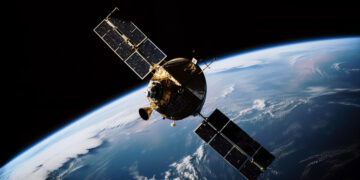Intro
August, 1955, Japanese west coast.
10 years after the War, in the small town of Michikawa in the Akita prefecture lies one of the few beaches free from US troops and away from American influence. Unusual sight today, a group of scientists are gathered on the beach. They talk, they passionately debate, they hold and manipulate a small metallic pencil. 30 cm long but so much focus and care on it you’d think it’s pure diamond.

Amongst them Hideo Itokawa can be recognized as leader with his “Commander” armband. He’s sitting on the upper deck of the improvised launch site. And still giving instructions to the crew, with a calm and composed face despite the high pressure.
Since, not only were there 23 scientists from Itokawa’s team but behind them, not far, the journalists were also watching. 70 at least had their eyes, cameras and notebooks open. They had heard of the pencil’s horizontal success, but today was the first time they could witness it themselves. And above all, they knew this time, the Professor was aiming for the sky.
But a problem was troubling the team, the journalists noticed. The little test article was planted on the sand but struggled to keep straight. The team had made a wonderful piece of engineering, but all past tests were horizontal, no one had thought to make a pad to keep the rocket from falling. After an expeditive chat he just instructed the team to attach some vinyl tape at the bottom.
Science sometimes requires simple solutions right? A clear example was the upper deck itself.
The Professor had installed and turned on 10 bare lights on the commander deck, each light was meant to turn off when its launch campaign step was done. Weather check ? Light off. Fuel loaded? Light off. Pencil installed? Another light off. The largest lamp, on the border of the deck was to only be lit at the moment of lift off. Itokawa called it “the first Japanese control center”. And on they went with preparations.
Until at 14.18 everyone heard the countdown: “Five, Four, Three, Two, One — Ignition!”
But as soon as the small pencil burned, the tape was just blown away. The small rocket fell on its side, and just crawled on the sand until all the fuel was out.
Now at that moment some of the journalists probably felt just like you did right now: “disappointed”. After all, they came here for a success story. And maybe deep down that’s all we want to hear about. But, despite all our best wishes that’s just not how achievements happen. Failure is just as necessary as perseverance. And lucky for Japan Itokawa knew it.
The team wasn’t here for a nice story, the ambition was much bigger. They were putting Japan on the space map. After a short analysis of what went wrong the experts solved it. “The rocket just needed a piece of nail underneath it” one of them concluded.
At 15.32 they had quickly attached a wire stopper at the bottom of it and went for the second try. Successfully this time. 16.8 seconds of burn. 600 meters in altitude and 700 m of horizontal flight.
On this day Professor Itokawa wrote the following Japanese Tanka (short poem):
“When we tried to launch the first rocket in front of the glares of the summer sea, the waves sounded rather close”
This day was Japan’s first day into the Space Race.
— — — — — — — — — — — — — — — — — — — — — — — — — — — — — — — — — — — — — —
In a previous article, I gave a quick summary of the different players in space today. I described how critical and strategic it was, for the ones who still weren’t in the race, to get moving, quickly.
Now unfortunately the short format didn’t really allow me to look at each of the countries in more detail. Every space player deserves a closer look to really describe their journey, their status today and what made their challenge different.
The truth is, that previous publication was intended as an intro.
There’s something I’ve been wanting to do for quite some time now and which I’ve decided to start with you today. In my mind I like to call it the “Space Runners” series.
Not sure if this will be the actual title when I publish, though. As I mentioned before my goal with Space Caffeine is to improve my own knowledge of the space industry despite my experience as a Space Engineer, and to share and highlight how space works to all of you guys.
And there are good chances that if you clicked on this article, you already know many things about NASA, SpaceX and the American space adventures in general. But unlike what Hollywood movies keep repeating, Space is not just an American endeavour. Just like Formula 1 is not just a Max Verstappen race.
I don’t come across enough content that talks about how much space is growing globally. And I don’t hear enough about where many countries are in the space industry, or about the story of how they even got there. Sometimes because of how new they might be. But sometimes because they just don’t brag enough.
And one of the best examples for a powerful yet discreet space nation is our first Space Runner: Japan.
The first steps
Now the small Pencil rocket was indeed the very first door Japan opened in their space adventure. It helped understand rocket science at a very small scale in the late 50s and the results created an excellent source of information. But they very quickly matured and grew into bigger formats.
By the 60s Japan was already launching sounding rockets to measure upper atmosphere data, this time not at 600 m altitude but at 60 km with the K-6 and K-8 solid fuel rockets. Be careful, I am talking here about the K-6 or Kappa 6 Japanese rocket. Not to be confused with the K-6 Indian missile.
Now by 1962 Japan not only had a few active sounding rockets, some good data from upper atmospheric flights, but it also had formally established the Kagoshima Space Center, the first full-scale launch site of the country. But those achievements were faced with significant complications.
Remember at that time the Cold War was dividing the planet into two camps. And despite Japan’s entire policies being oriented towards extreme pacifism, and an almost unconditional cooperation with the US, if you thought they were somehow helped by the American Space programme, well, think again.
The Americans didn’t really trust the Japanese at that time and had no interest in supporting their development in space technology. In fact, we’re talking about the 60s here, which means even American and Soviet space capacities themselves were both still growing, in a quite sensitive context.
This means Japan was, at least initially, completely on its own and couldn’t expect help from their partners. They were also under heavy scrutiny for any military activities, with the shadow of World War II not very far behind. All their space projects were not particularly well funded, plus they had to constantly show a white flag and prove their ambitions were always for “peaceful purposes”.
Now most of these projects were coordinated by the historic and prestigious, University of Tokyo from a unit called the ISAS or Institute of Space and Aeronautical Science.
By the way I had the privilege of following an internship there for 6 months in the Department of Aeronautics and Astronautics, during my younger years, and it was an exceptional experience.
But, if you know someone who actually graduated from this university or if you yourself are a student there, well hats off! They did quite some achievements in that place!
So even before a real Japanese Space agency was formed ISAS and NASDA, the National Space Development Agency were working together in the late 60s to place Japan in the space race. The ISAS on the academic side, coordinating inter-university research. And NASDA focusing on application programs for the country, or how to turn all this research into an actual space thing.
And after 15 tireless years of independent and underfunded work the first Japanese satellite appeared, Ohsumi in 1970. Made in Japan, by Japan, launched from a Japanese spaceport and on a Japanese Nissan rocket, the Lambda-4S.
Now this satellite wasn’t very sophisticated. If you’re imagining some kind of fancy satellite with cameras to spy on Moscow for the Americans, you will be disappointed. Ohsumi had only an accelerometer, a thermometer, a radio transmitter and some batteries on it. A very simple system. But this is 1970 we’re talking about.
Effectively by doing this Japan became the 4th country in the world to send a satellite to space, following the Soviets, the US and the French. And it did this only 25 years after being hit with two nuclear bombs.
As I mentioned at this stage Japan was also promoting demilitarization on all levels and carefully limiting funds for any research that could seem threatening. All the space activities of Japan had to be scientific, no national security gadgets. So, no spying satellite or cheeky pictures, no satellite communications for their troops, and certainly no direct rocket development by the army. Things were kept in universities and government bodies.
And maybe this can at least partially explain why Japan’s Space adventures have always remained discreet and aren’t excessively promoted. Don’t make waves, but never stop pushing:
- Small flying pencils in the 50s.
- Upper atmosphere sounding rockets in the 60s.
- Orbital capacity by the 70s.
- And today fully capable launchers with commercial and institutional capacity like the H-2 and now H-3 rockets.
Hard times
Now this sounds wonderful, but it was certainly not a smooth ride. Some of the original orbital rockets didn’t even ignite or went completely off track and crashed or were terminated, just like their little pencil ancestor.
I have mentioned Ohsumi as the first Japanese satellite but before this big success there were four attempts at launching a satellite with that same Lambda-4S rocket. The four attempts have all failed.
Some scientific satellites that even came after Ohsumi also didn’t make it. In 1976 they lost an orbital telescope, the CORSA spacecraft, short for Cosmic Radiation Satellite, due to a failure of the Mu-3 rocket. It was followed with a second CORSA-b satellite that did end up reaching orbit 3 years later and was renamed Hakucho, Japanese for swan. In 1979, they lost two Ayame satellites, or experimental communications satellites, loaded on an equivalent of the American Thor Delta rocket, called N-1.
Yes, you heard that right, it does seem that in the late 70s the US were keener to help their Japanese partners.
But despite the support, in the same year the first Ayame satellite died when the third stage of the rocket hit it slightly after separation. And the second satellite just stopped transmitting shortly after being deployed.
It was not an easy journey, and every series of successful flights was punctuated by a crushing failure. And it’s important to understand that every failure in the space industry is a big event.
One given rocket and satellite couple, before they are put together require a lot of time and effort, years each, for the design, manufacturing, assembly and launch preparation. It is easy for us to look at it now that it’s so far behind. But some engineers have experienced spending 10 years full time on a project only to see it fly in a cloud of smoke because of one simple mistake. Not to mention the horrific financial cost of these babies.
Determination
However, Japan remained unstoppable. By the 90s Japan, still through the ISAS and NASDA had continued the expansion and built not only more rockets and satellites but this time a full module for the International Space Station.
Now many of you might know this but the ISS is the biggest spacecraft ever put in orbit and the most expensive thing ever built by humans.
A full module for this project just shows how big of a place Japan had reached in the Space Industry at that point.
But a few problems had started to appear in the way Japanese space programmes were organised.
First of all, there was a clear split between the academic side, the ISAS and the NAL or National Aerospace Lab, and the guys of the government in NASDA.
The entities had managed to work together for decades but they were still different groups, with different leaderships, goals and work culture.
And in this case NASDA was mostly working on payload design and launch services, which means they were managing the industrial and engineering side of satellite and rocket missions.
ISAS and NAL on the other hand were academics focusing on developing new technologies or preparing scientific missions that would get them valuable data and knowledge.
The processes and the mindset were simply not the same which made cooperation on some projects quite difficult and led to conflicts, or even worse, mistakes.
Well, easy to solve, right?
Let’s just put all these space guys into one big group and call it JAXA, which is exactly what Japan did in 2003.
Now as you can imagine, this might sound like the right move but it doesn’t come without a lot of trouble, especially at the start.
We’re talking about 3 very different groups, with a long history and a strong identity.
The processes and the way they make decisions are different, and this needed to be aligned.
The budgets had to be distributed equally.
The people themselves had to speak the same language.
It is said that during one meeting NASDA engineers, who were used to the Japanese government’s strict hierarchy, were completely destabilized by their scientist colleagues, as they used to open debates and didn’t hesitate to challenge anyone’s work if it sounded wrong, even the higher ranks.
But despite all that the merger ended up working quite well.
Several historic missions took off wearing a JAXA flag.
One of the biggest names were the Hayabusa missions where Japan launched several spacecrafts not just in Earth orbit anymore.
The one targeting the asteroid called Itokawa in 2003 has, despite multiple issues, a fuel leak and communication blackouts, managed to bring some asteroid dusts back to Earth in 2010.
A second Hayabusa, this time going for asteroid Ryugu was a resounding success and brought back solid samples back to Earth in 2020, which is a milestone very few countries have ever achieved.
New Challenges
Now despite how great and inspiring this all sounds it is not necessarily the status quo.
In fact, one of the biggest topics Japan is facing right now is a direct consequence of its “Peaceful purposes” policy.
Yes, as I mentioned earlier, and because of the political heritage, Japan has made all they can to stay away from using space in a military way.
But that doesn’t mean its neighbours are bound to do the same.
In fact, the political tensions in the area, mainly the rapid growth of China’s space military projects, have started to push the Japanese away from their “Peaceful only” slogans.
2008 marked a switch in Japan’s policies with the signature of the Basic Space Law.
For the first time ever it became officially and legally allowed to pursue space applications for national security.
A move that clearly confirms their worries.
Actually, only a few days before writing this article, in November 24, Japan has launched a military communications satellite called Kirameki 3 with one of its very own H3 rockets.
Not only the politics are changing but the finances as well.
The Japanese clearly understand that in 2024, to achieve success in Space you cannot only rely on your government agency anymore.
We are at a phase in the Space Race where private companies are becoming more and more important, this goes for rockets, satellite manufacturing or even space exploration itself.
But unfortunately, Japanese companies don’t seem to be following with the same speed as their Chinese or American counterparts.
Even regionally, China and India have become very serious competitors, and Japan definitely sees itself as behind in the space industry race.
Yes, it does have its own space launch capacity, they even have at least four operational spaceports across the country.
But the question is how active are they compared to the competition?
Japan didn’t launch a single rocket in 2022 and only three rockets in 2023, including a failure of the first H3 rocket.
This is simply not sufficient.
This led to the establishment of a multibillion-dollar Space Strategic Fund to support the development of national space projects, private and public projects.
1 trillion yen or 6.7 billion dollars to be exact are allocated with expected results over the next 10 years in all space industry and space technology fields.
Success in this plan can mean a completely different path for the Japanese in space especially with the US — China fight hitting them on both sides.
After all, despite being a very close neighbour to China, Japan is very clearly one of the closest allies of the Americans in the region, if not the closest.
And while China is gathering partners for its future Moon ambitions and the International Lunar Research Station, Japan has signed the American Artemis accords and joined US Moon plans.
A predictable political move certainly, but who knows what it will mean in the near future.






